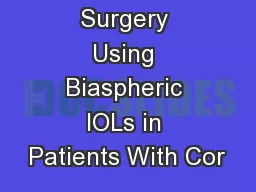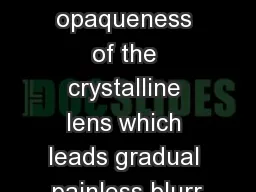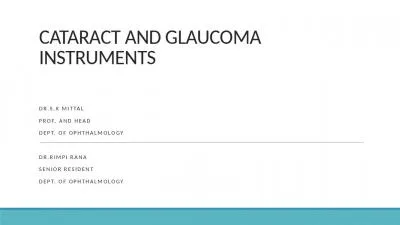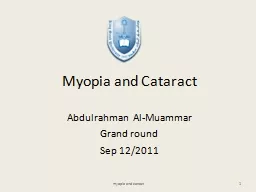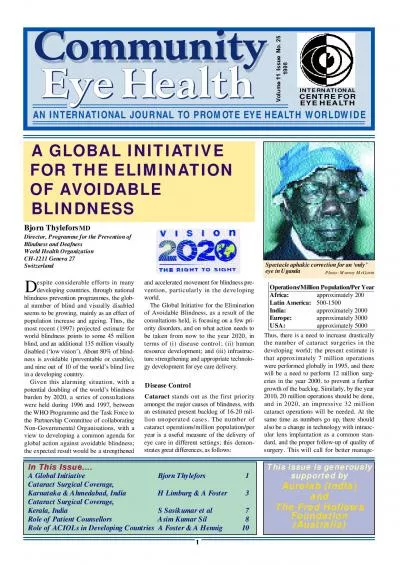PPT-Cataract Surgery Using Biaspheric IOLs in Patients With Cor
Author : luanne-stotts | Published Date : 2017-09-20
James P Gills MD St Lukes Cataract amp Laser Institute Tarpon Springs FL Financial Disclosure Dr Gills is a stockholder In Lenstec Allergan Alcon and Abbott Medical
Presentation Embed Code
Download Presentation
Download Presentation The PPT/PDF document "Cataract Surgery Using Biaspheric IOLs i..." is the property of its rightful owner. Permission is granted to download and print the materials on this website for personal, non-commercial use only, and to display it on your personal computer provided you do not modify the materials and that you retain all copyright notices contained in the materials. By downloading content from our website, you accept the terms of this agreement.
Cataract Surgery Using Biaspheric IOLs in Patients With Cor: Transcript
Download Rules Of Document
"Cataract Surgery Using Biaspheric IOLs in Patients With Cor"The content belongs to its owner. You may download and print it for personal use, without modification, and keep all copyright notices. By downloading, you agree to these terms.
Related Documents

